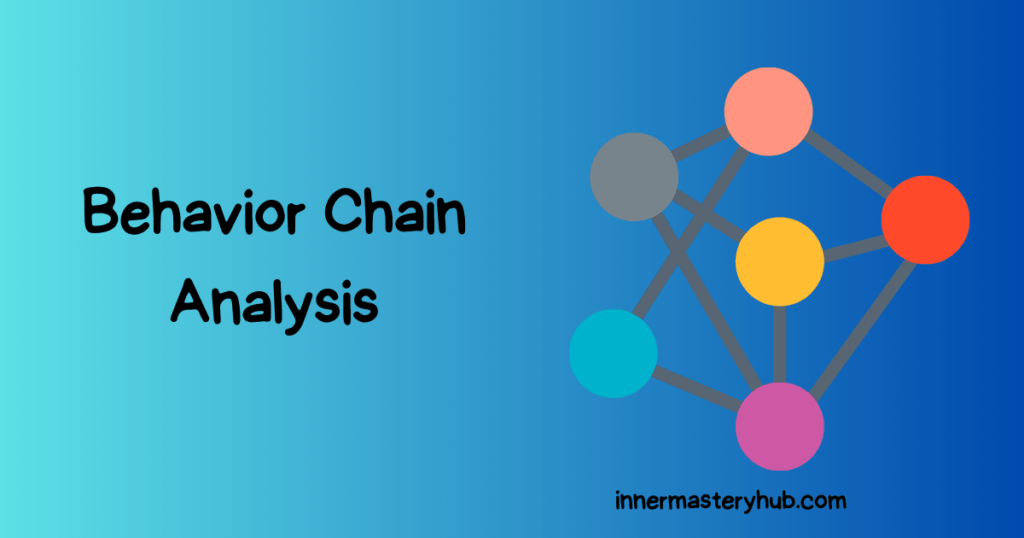10 Signs Your Emotional Eating Disorder Is Running Your Diet

When people turn to food rather than hunger as a coping mechanism, this is known as an emotional eating disorder. This behavior might be brought on by stress, despair, or boredom. It’s not merely a poor habit to eat emotionally.
Long-term health problems like diabetes, obesity, and mental health difficulties may result from it. Breaking this pattern requires knowing the triggers and identifying the warning signs.
How does Emotional Eating disorder develop?
Many people don’t eat because they are hungry. Instead, emotions like stress, anxiety, or sadness drive their food choices. For example, you might crave sugary snacks after a bad day at work or eat chips when you feel bored. This is emotional eating.
Emotional eating happens because food often feels like an easy way to comfort yourself. Your brain connects food with pleasure and relief, even if that relief is short-term. Unfortunately, this temporary fix may cause more problems.
Emotional eating can make you feel guilty or ashamed. These feelings create a cycle of overeating, emotional distress, and poor health. Over time, this can damage your physical and mental well-being.
Why Emotional Eating Feels Uncontrollable?
Why it’s so challenging to stop emotional eating may be a mystery. The reality is that self-control isn’t the only component of emotional eating. It’s related to the way your brain functions. Stress causes your body to release the hormone cortisol, which makes you feel hungrier. Because high-calorie items like sweets and fast food give you energy quickly, your brain craves them.
Emotional triggers play a significant role. Common eating triggers include:
- Stressful workdays or deadlines.
- Relationship problems or loneliness.
- Celebrating or coping with a substantial life change.
For example, imagine a person who eats ice cream after every argument with their partner. This creates a habit loop in which the brain expects food whenever there’s emotional stress. Breaking this loop takes more than willpower; it demands awareness of your triggers.
10 Signs Your Emotions Are Running Your Diet
You eat when you’re not physically hungry.
You realise you’re full or didn’t feel hunger pangs, yet you still eat because you feel stressed, sad or bored. That suggests the trigger isn’t your body’s need for food but your emotions.
You crave specific “comfort” food.s
Instead of any food, you reach for sweets, salty snacks, or highly palatable items when upset. These foods offer momentary relief because they activate reward circuits—not because your body needs energy.
You eat to soothe or distract from emotion.s
Rather than dealing directly with your feelings (stress, loneliness, anger), you use eating as a quick relief tool. You might feel better temporarily, but the real emotion remains unresolved.
You feel guilt, shame, or regret after eating.
After the food-driven mood relief, you may feel inadequate, ashamed, or out of control. That emotional cycle—eat → feel better → guilt → repeat—is a hallmark of emotional eating.
You tend to eat at unusual times or in secret.
Maybe you eat late at night, hide snacks, or consume food when alone because you don’t want others to see. These behaviours indicate that eating is less about nourishment and more about emotion.
Negative feelings trigger your eating.
When you feel stressed, anxious, bored, lonely, or upset—and you turn to food—that pattern reflects emotional eating. The food becomes a coping mechanism for complicated feelings.
You are unaware of your hunger/fullness cues.
You may eat long after you’re full, or start eating without noticing hunger. This disconnection between physical hunger and eating stems from eating for reasons other than bodily need.
You have difficulty stopping once you start.
You may intend to have just “a little”, but once you begin, you keep eating until you feel uncomfortable—that loss of control links to emotional rather than physical hunger.
Food is your go-to way of coping rather than other strategies
Rather than reaching out to talk, taking a walk, distracting yourself, or using healthy coping, you instinctively reach for food when emotions arise. That’s a signal your emotional regulation is being managed via food.
You recognise a recurring pattern tied to mood changes
Perhaps after work stress, during holidays, or after a conflict, you consistently eat more. If you notice a consistent link between mood/emotion and increased eating, you’re seeing the pattern of emotional eating.
The Science Behind Emotional Eating Disorders
According to research, emotional eating is widespread. A 2018 study published in Appetite found that stress increases people’s cravings for high-calorie foods. Mindfulness-based techniques dramatically reduced emotional eating, according to a separate study published in the International Journal of Behavioral Nutrition and Physical Activity (2021).
These results show that willpower isn’t the only factor in emotional eating. The goal is to retrain your brain to process emotions differently.
How to Overcome Emotional Eating Disorder
You can break free from emotional eating with the right strategies. Below are actionable steps to regain control of your eating habits.
1. Identify Your Emotional Eating Triggers
Start by tracking your emotions and food choices. Write down what you eat and how you feel before and after eating. This helps you notice published examples. Do you find that snacks increase people’s food cravings?
Use a journal or a food-tracking app. Label whether your reduced physical (stomach) or emotional (separate boredom). Once you know your triggers, you can plan better responses.
2. Practice Mindful Eating
Mindful eating means paying attention to your food without distractions. Sit down. The goal is to be trainable, chew slowly, and enjoy each bite. Notice when you’re full and avoid overeating.
For example, instead of snacking while watching TV, try eating at the kitchen table. Focus on the taste and texture of your food. Mindfulness can help you reduce the urge to eat out of habit or emotion.
3. Replace Emotional Eating Disorder with Alternatives
Instead of reaching for food, try healthier activities to cope with your emotions. Here are some emotional eating alternatives:
- Go for a walk when you feel stressed.
- Talk to a friend about your feelings.
- Practice deep breathing exercises to calm your mind.
- Listen to calming music or a favorite podcast, or read a book.
For example, if you’re stressed after work, take a 10-minute walk before heading to the kitchen. This can break the connection between stress and food.

4. Use Positive Emotional Eating
Affirmations can help shift your mindset. These are positive statements that remind you of your goals. Examples include:
- “I choose to eat when I’m physically hungry, not emotionally hungry.”
- “I can manage my emotions without turning to food.”
- “I am in control of my eating habits.”
Say these affirmations daily, especially when you feel tempted to eat emotionally. Repeating them reinforces healthier patterns in your brain.
5. Seek Professional Help When Needed
If emotional eating disorder feels overwhelming, don’t hesitate to get support. Therapists, especially those trained in cognitive-behavioral therapy, can help you understand your emotions and develop healthier coping strategies.
For example, a therapist might help you create a plan to manage stress without food. They can also teach you how to replace negative self-talk with empowering thoughts.
Practical Examples to Apply These Strategies Daily
Let’s look at a common scenario. Suppose you’ve had a stressful day at work, and your first thought is to order pizza. Here’s how you can apply the tips above:
- Pause and identify your trigger. Realize you’re stressed, not hungry.
- Practice mindful eating. If you still want pizza, eat a small portion slowly and savor it.
- Choose an alternative. Take a quick walk or write in a journal instead of overeating.
- Affirm your control. Say, “I can handle stress without food.”
By repeating these steps, you can slowly change how you respond to emotional triggers.
Regain Control Over Your Emotional Eating Disorder.
Though it can be tough to manage, emotional eating disorders can be managed. Begin by identifying your triggers, practicing mindful eating, and adopting healthier emotional eating alternatives. To motivation, substitute self-critical or affirming statements.
Take assistance from a therapist or join a support group if you require further support. Every little step counts, but remember that you take time and work to stop the cycle of emotional eating.
Your physical and mental health can be improved by being aware of your emotions and choosing better options. Get back in touch with food by taking the first step today.
FAQs about Emotional Eating Disorder
What is an example of an emotional eating disorder?
After a demanding workday, eating a quart of ice cream even though you’re not physically hungry is an example of emotional eating. Comfort food cravings are triggered by stress, and eating temporarily relieves them. However, overeating and subsequent feelings of regret or guilt might result from this behavior.
What are the different types of emotional eating disorders?
There are several types of emotional eating disorders:
Anorexia Nervosa: Extreme food restriction and fear of weight gain.
Bulimia Nervosa: Binge eating followed by purging.
Binge Eating Disorder: Uncontrollable overeating, such as without purging.
AR, FID: Avoidant/Restrictive Food Intake Disorder, avoiding food due to sensory issues.
Pica: Eating non-food items.
What Are The Treatments For Binge-Eating Disorder?
Cognitive-behavioral therapy (CBT) is one type of therapy used to treat emotional eating disorders. It helps patients control their emotions and alter their eating habits. Antidepressants and other medications may be helpful. Healthy eating practices are taught in nutrition counseling.
Support groups offer emotional assistance.
When Does Emotional Eating disorder become a habit?
Emotional eating disorder develops into an eating disorder when it becomes a compulsive behavior that interferes with day-to-day functioning, causes shame or guilt, and hurts one’s physical or mental well-being. Consistently using food to manage emotions rather than hunger could be an indication of a more serious problem that needs to be addressed.
What is emotional eating disorder?
Emotional eating disorder isn’t a formal diagnosis by itself, but refers to the pattern of eating in response to emotions (sadness, stress, boredom) rather than hunger.
When the behaviour is frequent and extreme, it may develop into or signal something like Binge Eating Disorder.
What emotional issues lead to emotional eating?
Key emotional triggers include stress, sadness, loneliness, boredom, anger, and poor emotional regulation. If you don’t have a healthy way to cope with upsetting feelings, you might turn to food for comfort.
What is the difference between emotional eating and binge eating disorder?
Emotional eating is occasional eating to soothe emotions; binge eating disorder is recurrent episodes of eating large amounts in a short time, often with loss of control. One may lead to the other if unchecked.
What is the difference between emotional eating and binge eating disorder?
Emotional eating is occasional eating to soothe emotions; binge eating disorder is recurrent episodes of eating large amounts in a short time, often with loss of control. One may lead to the other if unchecked.
How do negative emotions contribute to emotional eating?
Negative emotions (e.g., sadness, anger, disappointment) often precede emotional eating because eating may temporarily numb or distract from those feelings.
It becomes a coping mechanism rather than addressing the root emotion.
Can stress cause emotional eating?
Yes — stress triggers hormones (like cortisol), which can lead to increased cravings for high-fat/sweet foods and the tendency to eat for comfort.
Repeated stress + eating to cope = risk of habitual emotional eating.
Are childhood experiences linked to emotional eating disorder?
Yes — early life experiences, such as receiving food as comfort, reward, or a coping tool, can embed the pattern of eating to manage emotions.
That learned behaviour may persist into adulthood.
Is emotional eating disorder only about negative emotions?
Mostly yes — emotional eating is commonly when people eat in response to negative feelings rather than actual hunger. But in some cases, it can also relate to positive emotions or celebrations.
What role does emotion regulation play in adopting emotional eating disorders?
Emotion regulation. Difficulties in regulating emotions (suppressing, rumination, avoidance) are strongly linked to emotional eating disorders. If you lack alternative coping strategies, you may use food as a substitute.
How can I tell if my eating is an emotional eating disorder rather than hunger-based?
Signs include eating without being physically hungry, craving particular “comfort” foods, eating to soothe emotions, and then feeling guilt or shame afterwards. and
How do negative emotions contribute to emotional eating disorders?
Negative emotions (e.g., sadness, anger, disappointment) often precede emotional eating because eating may temporarily numb or distract from those feelings.
It becomes a coping mechanism rather than addressing the root emotion.






